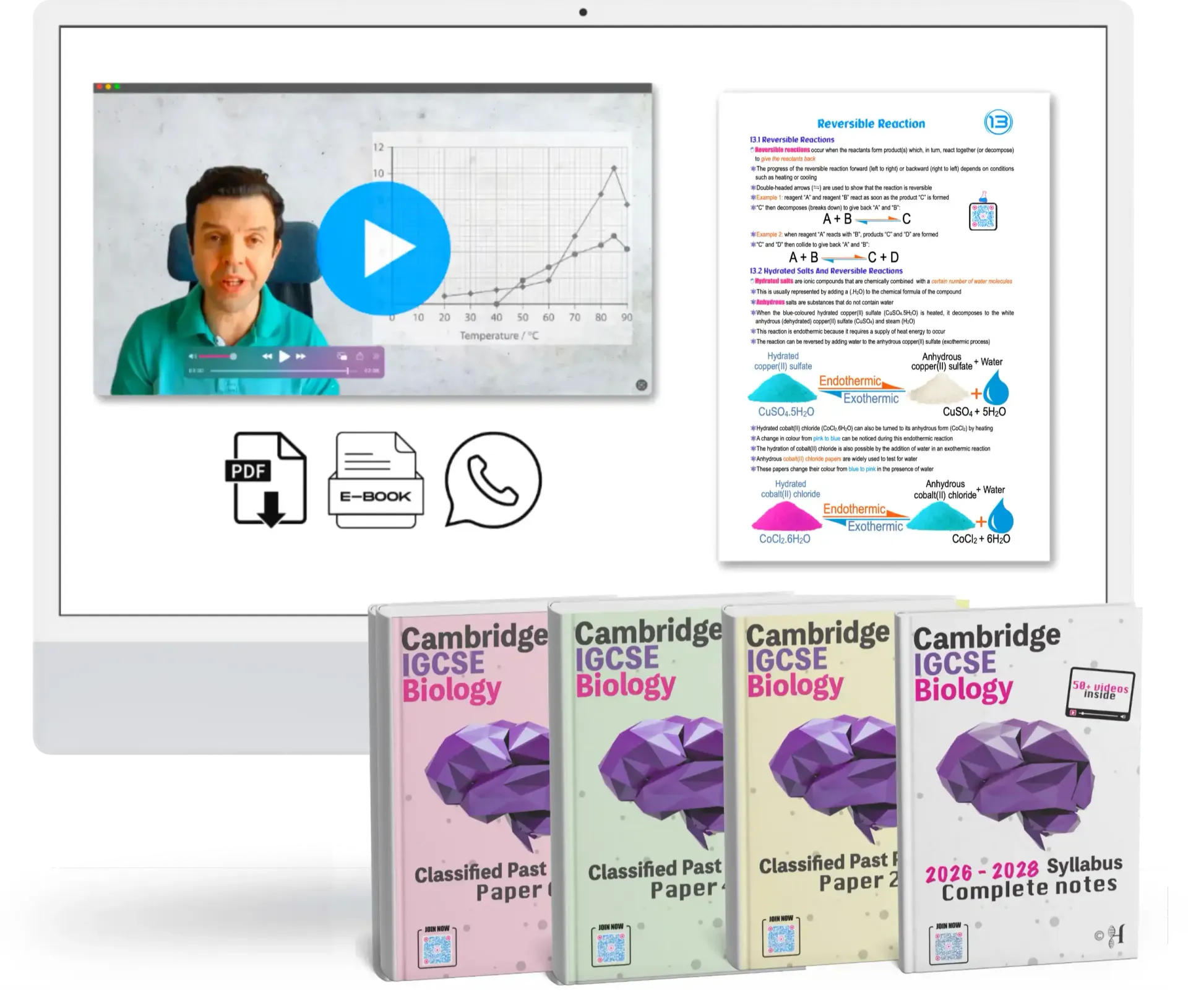IGCSE Biology
2026 - 2028
Syllabus Checklist
Topic 1: Characteristics and Classification of Living Organisms
Concept and Uses of Classification Systems
State that organisms
can be classified into groups by the features
that they share.
Describe a species
as a group of organisms that can reproduce to produce fertile offspring
.
Describe the binomial system
of naming species as an internationally agreed system where each scientific name has two parts – genus
and species
.
Construct and use dichotomous keys
based on identifiable features.
Explain that classification systems
aim to reflect evolutionary relationships
.
Explain that DNA base sequences
are used as a means of classification.
Explain that groups of organisms sharing a more recent common ancestor
have more similar DNA base sequences
than those with a distant ancestor.
Features of Organisms
State the main features
used to place animals
and plants
into the appropriate kingdoms
.
State the main features used to place organisms into groups within the animal kingdom
, limited to:
▪ Main groups of vertebrates
: mammals, birds, reptiles, amphibians, fish
▪ Main groups of arthropods
: myriapods, insects, arachnids, crustaceans
Classify organisms using the features identified above.
State the main features used to place all organisms into one of the five kingdoms
: animal
, plant
, fungus
, prokaryote
, protoctist
.
State the main features used to place organisms into groups within the plant kingdom
, limited to ferns
and flowering plants
( dicotyledons
and monocotyledons
).
Classify organisms using the features identified in points 4 and 5.
State the features of viruses
, limited to a protein coat
and genetic material
.




